|
Antique stove FAQ
Over the years I've had a number of enquiries concerning the
installation, commissioning and signing off of antique solid fuel
burning appliances.
Many installers decline to have anything to do with appliances that
predate the current regulations, I feel this is a misreading of the
regulations and I have endeavoured to try to collect together the
snippets of information that I have encountered.
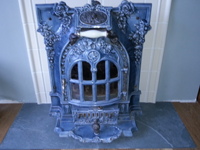
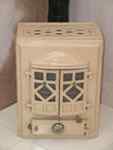
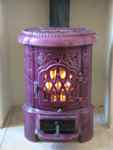
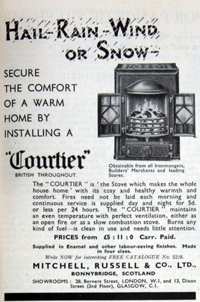 HETAS advice is antique appliances can be installed providing the
installer can demonstrate certain specific information and the
appliance can be made to conform to specific criteria; HETAS advice is antique appliances can be installed providing the
installer can demonstrate certain specific information and the
appliance can be made to conform to specific criteria;
- The appliance must have a net efficiency of at least 65%.
Multiply by 0.9 to convert net to gross. Manufacturers typically
quoted gross efficiency up until the 21st Century.
- The appliance's output should be determined and noted in kW and
vented if over 5kW. To convert BTU (British Thermal Units) to kW,
multiply the BTU value by 0.000293
- The appropriate fuels for the appliance should be determined and
noted. Many antique appliances due to being of cast iron
construction can frequently burn coal, smokeless, wood and even
petroleum coke.
- It should be determined if the appliance is an 'open' or a
'closed' appliance and a suitable hearth fitted. 300mm minimum for
an 'open' appliance a 225mm minimum for a 'closed'. A freestanding
appliance should be on a superimposed hearth 840mm2, with
the clearances given above dependant upon open/closed determination.
- It is unusual to be able to determine whether or not the
appliance has been tested to raise the temperature of the hearth to
less than 100°C. I take the view that if the appliance is raised
sufficiently, with a log store for example, this is a reasonable
supposition and the appropriate hearth: that is a 12mm superimposed
hearth is legitimate.
- The make and model of the appliance should be determined.
- It should be determined if the appliance is suitable for
'continuous' or 'intermittent' use. Most modern appliances are
'intermittent'.
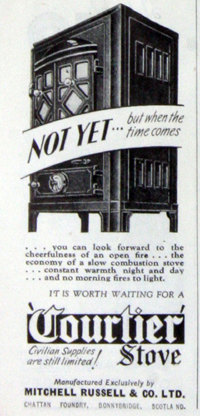 The appliance should be airtight sealed to the room. Any mica
windows should be intact or re-glazed with new mica or fire glass. Fire
rope seals should be serviceable or made to be so. The appliance should be airtight sealed to the room. Any mica
windows should be intact or re-glazed with new mica or fire glass. Fire
rope seals should be serviceable or made to be so.
If any manufacturers installation instructions are available the
should be followed unless they are in conflict with Document 'J'. If
they exceed Document 'J' they should be followed.
I take the view that the CE legislation that came into force in the UK
in summer 2013 makes not a jot of difference to antiques as they are
not sold 'as new' and regulations do not require retrospective
application.
Many antique burners have smaller than standard or unusually sized
outlets. It is good practice to size these to modern standards and
connect them to 5" or 6" pipes/flexible liners. It is a not legitimate
to decrease the size further.
| Antique stove fitting from |
£450 |
| inclusive of
registration plate, CO Alarm, HETAS certification and Dataplate. |
Limitations
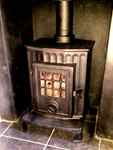 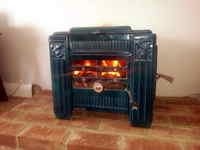 No antique appliance can legitimately burn wood in a smoke control
area (SCA). However burning smokeless fuels would be legitimate use.
As councils usually police SCAs by observing 'thick smoke' from
residential premises, if the burner can be induced to burn hot enough
it is unlikely there would be cause for prosecution. No antique appliance can legitimately burn wood in a smoke control
area (SCA). However burning smokeless fuels would be legitimate use.
As councils usually police SCAs by observing 'thick smoke' from
residential premises, if the burner can be induced to burn hot enough
it is unlikely there would be cause for prosecution.
The CO output at 13% oxygen is beyond mine and most installers
capabilities of being determined.
The retailer of the stove will often know much of the information
needed and even if all they know is the name of the manufacturer this
can often be sufficient to determine much of the other information
required.
A stove I encountered recently made probably immediately post war and
know to be called a 'Courtier' I managed to track down all the
required information from industrial heritage websites once the
manufacturer was found. In this case Mitchell Russell & Co of Bonny
bridge, Scotland.
www.antiquefrenchstove.com
www.antiquestoves.com
www.antiquestoveassociation.org
www.britainsheritage.co.uk
www.chaank.co.uk
www.happystoves.co.uk
www.poeleabois.co.uk
www.stovefinders.com
www.stovehunters.com
Based in Marlborough, Wiltshire, specialising in antique French
stoves, Deville, Chappee, Godin, Pied Selle etc.
|

